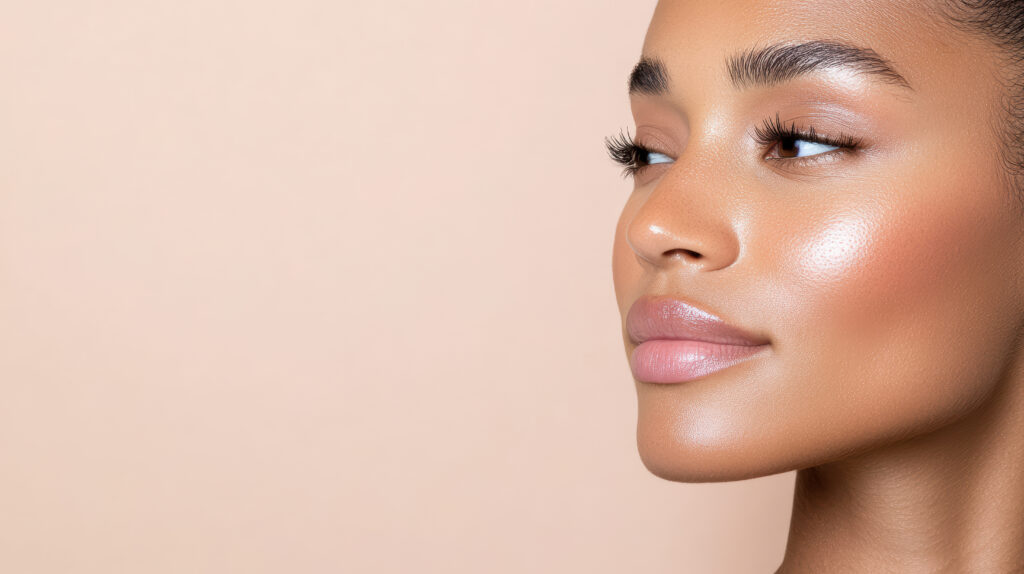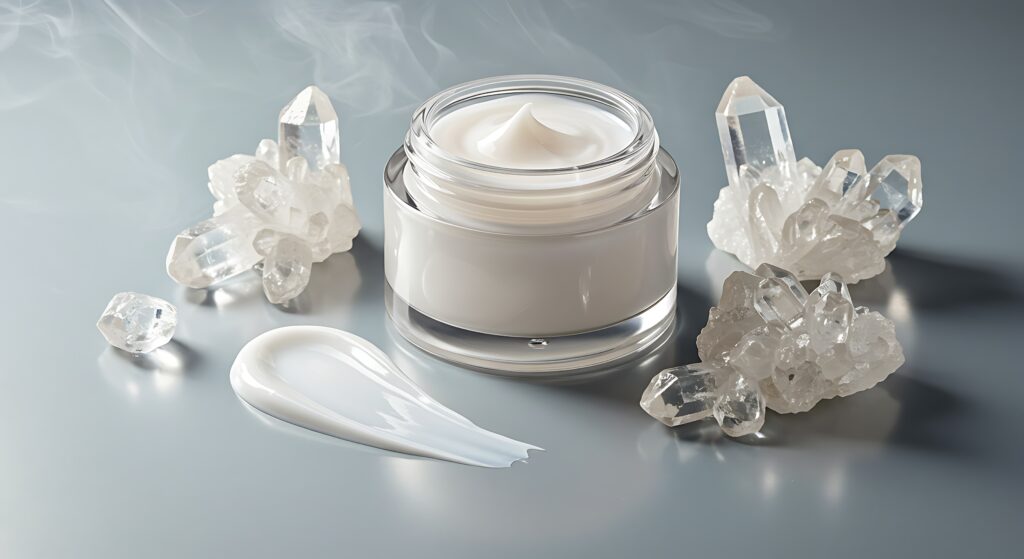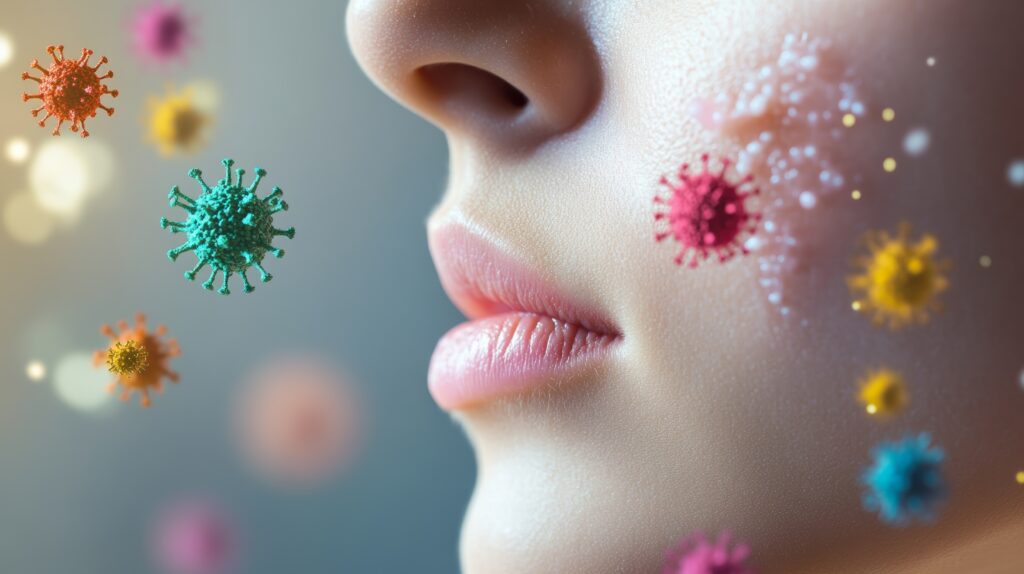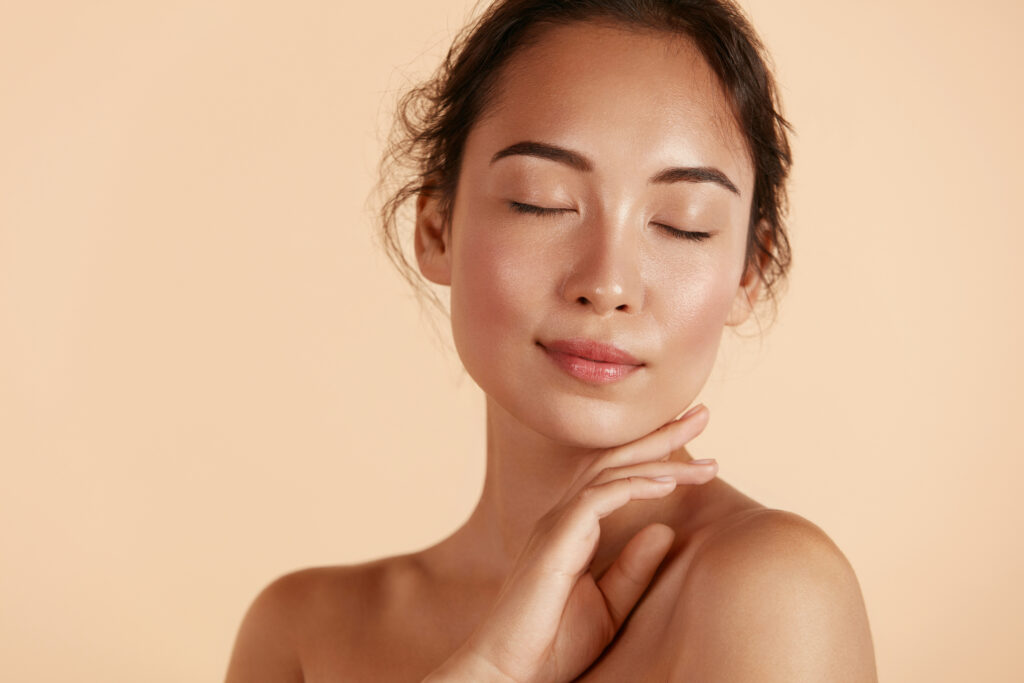The Problem You’re Actually Solving
Cosmetic formulators aren’t just building emulsions and delivery systems; you’re designing experiences that are judged almost instantly. In real life, people form impressions of a face in a fraction of a second—well under the time it takes to read this sentence. Laboratory work in perception science shows that observers make stable judgments from faces after exposures as short as 100 milliseconds; more time mostly increases confidence, not direction. That matters for skincare because consumers evaluate “did it work?” at a glance, long before anyone reads a box claim or a clinical graph.
At the same time, the “skinimalism” movement asks you to deliver more perceivable benefit with fewer steps. Fewer layers mean each formula has to earn its place by doing multiple jobs and doing them visibly. The challenge is to engineer a single product that creates a glance-level improvement—the kind that shifts first impressions—while still building real biological value beneath the surface. That’s the bar this article sets: a defensible, perception-anchored claim you can make with one active in a lean formula, backed by both biology and psychophysics.
Why “Glance-Level” Is Hard
First, what moves perception at a glance? Across peer-reviewed literature, three cues consistently shape snap judgments of facial skin: tone evenness, feature-to-skin contrast, and surface topography/optical finish. Uneven chromophore distribution (melanin/hemoglobin) makes faces look older and less healthy, while more homogeneous pigmentation reads as younger and more attractive. Facial feature contrast also declines with age; restoring contrast tends to make faces look younger. These are not marketing tropes—they’re effects replicated in controlled studies.
Second, immediate optical outcomes are not trivial to measure. “Radiance,” “glow,” and “soft focus” have historically lived in subjective language. Yet robust, open methods are available. Image-based approaches quantify evenness from standardized photographs (e.g., Lab* dispersion metrics), while optical tools measure gloss and haze without adding pigment. When these methods are specified and controlled—lighting, polarization, region-of-interest—they connect instrument signals to what people actually perceive in seconds.
The third challenge is practical: classic routes to instant improvement often rely on stacking multiple actives and pigments—fine cosmetically, but at odds with skinimalism and tight INCI lists. The goal, then, is to compress capability into one ingredient that improves evenness, smoothness, and perceived vitality quickly, and continues to deliver biological value with use.
CutiGuard CLR™: The Skinimalist Route to 3-Second Results
CutiGuard CLR™ (CLR Berlin) is a biotech active derived from the extremophilic red alga Galdieria sulphuraria. Mechanistically, it targets cellular pathways central to visible aging: amplifying p62-mediated selective autophagy, reducing extranuclear HMGB1, and driving the autophagic breakdown of GATA4—a transcription factor tied to senescence and the SASP cascade. In vitro, these shifts correspond with fewer senescent cells and support of extracellular matrix markers under stress. In short, it’s a senomorphic strategy that reduces the burden of “old-acting” cells while helping tissues perform more youthfully.
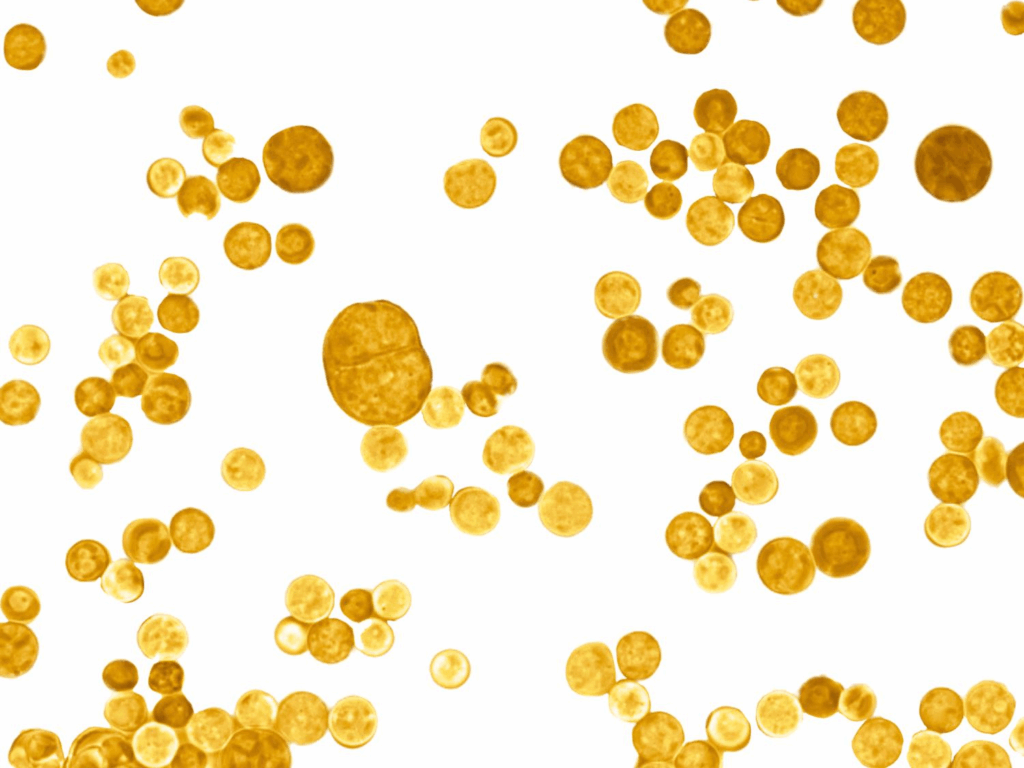
Just as important for skinimalism, CutiGuard CLR™ is straightforward to formulate: 3% usage level, broad pH 3.0–9.0, and unpreserved—compatible with minimalist base systems and preservative strategies without bringing extra baggage. That means fewer ingredients can cover more endpoints.
Where biology meets perception is the “first-impression” data. In an industry-first, three-second paired-image test designed to mimic real-world snap judgments, ~170 blinded independent panelists were shown standardized before/after photos from a six-week, 3% use study; ~76% preferred the post-treatment images at a glance. This is precisely the kind of evidence a skinimalist claim needs: the improvement is not only measurable—it’s noticeable in seconds.
From Mechanism to Metrics
Mechanism, condensed. In stressed keratinocytes and aged fibroblasts, CutiGuard CLR™ increases selective autophagy (LC3B), raises p62 (the cargo receptor), and accelerates GATA4 degradation, which is a lever to reduce senescent burden and downstream SASP mediators. In parallel, under acute stress, fibroblasts treated with the active show increases in pro-collagen I and hyaluronic acid, aligning with resilience at the matrix level. These cellular changes are congruent with the visible endpoints you care about: smoother micro-topography and more even tone.
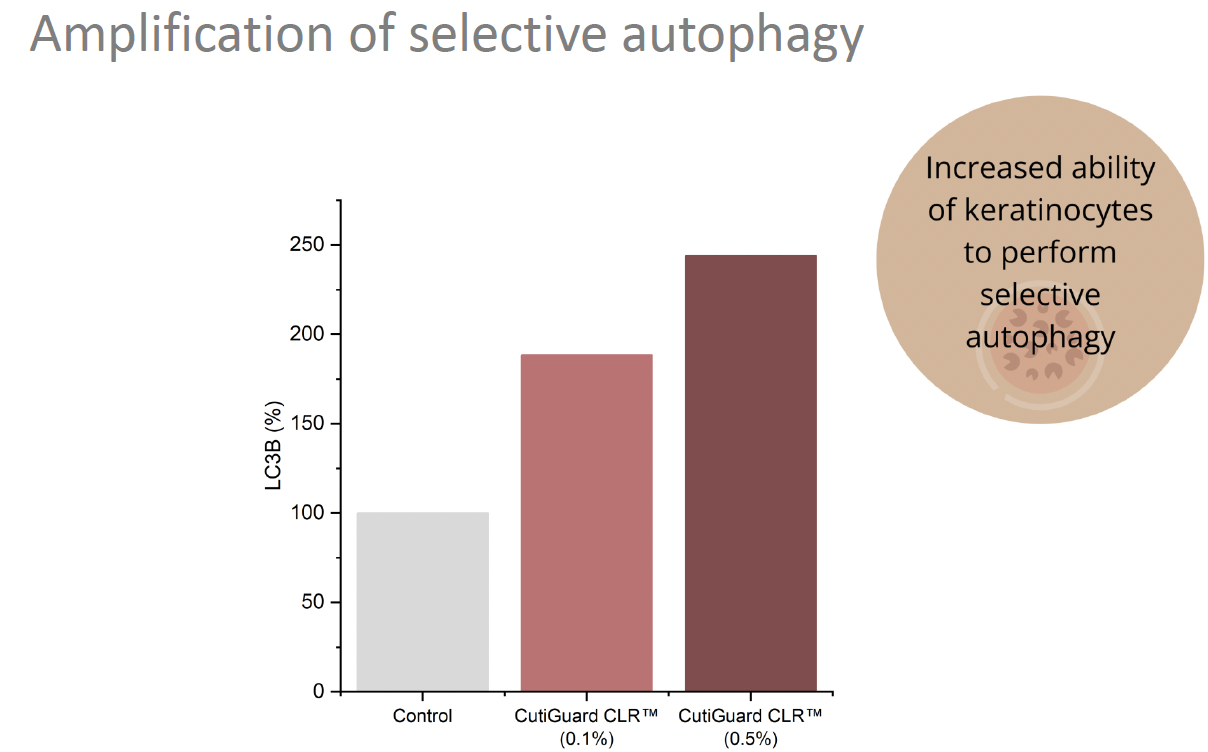
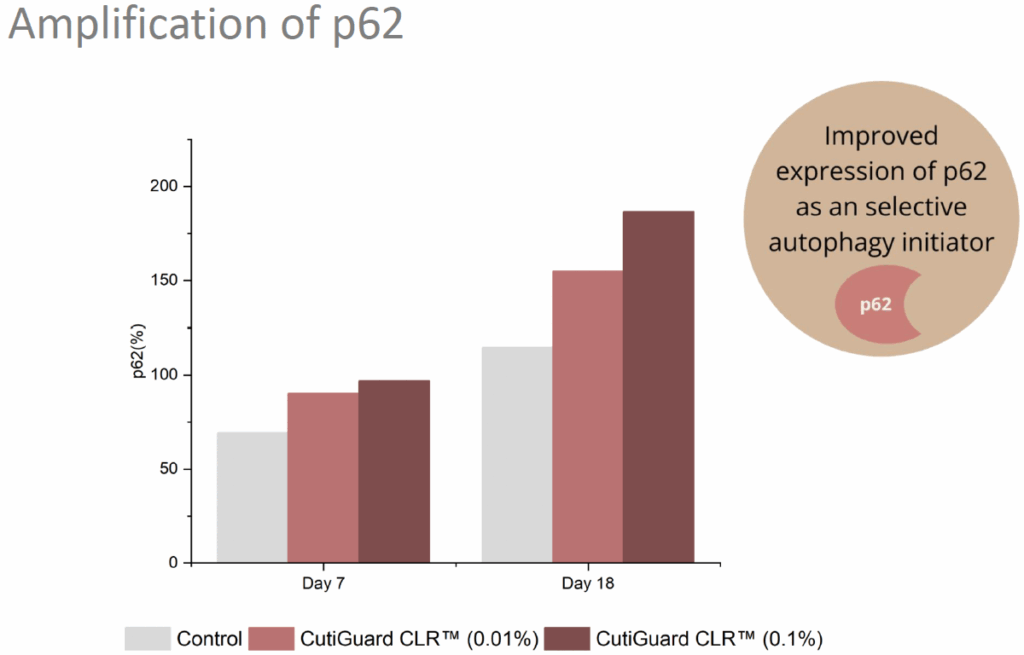
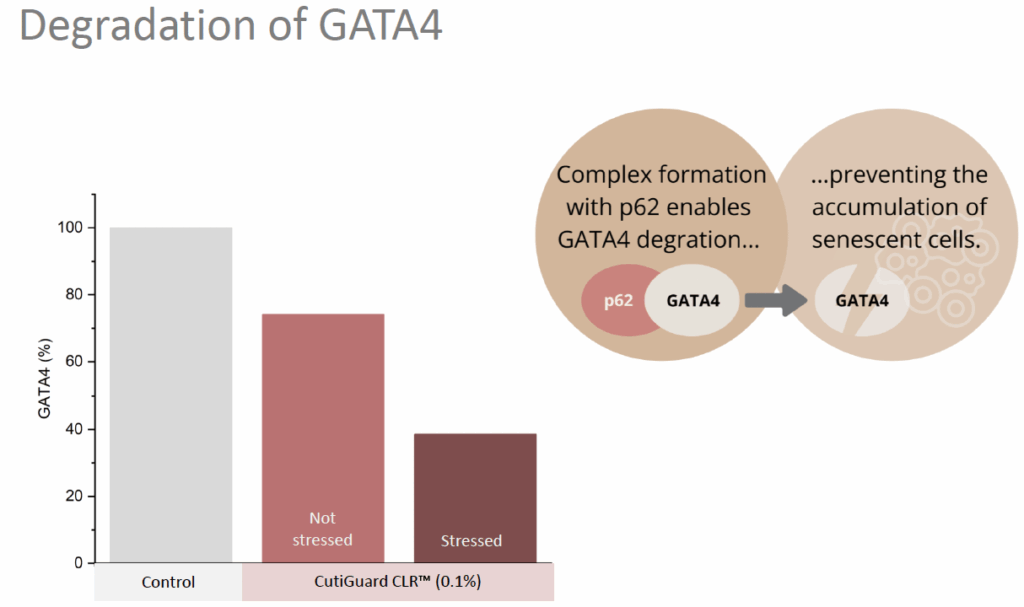
In vivo, image-based outcomes link to perception. The program used ColorFace® cross-polarized photography to compute an evenness parameter (H76), essentially the standard deviation of Lab* across a region of interest—lower dispersion indicates more uniform tone. This aligns directly with perception science: people read more homogeneous color distribution as healthier and younger. CutiGuard CLR™ improved evenness over 28–42 days, and in a benchmarking analysis achieved ~38% of the “makeup-like” evenness effect—without adding pigment. That’s an optical and biological win compatible with skinimalist positioning.
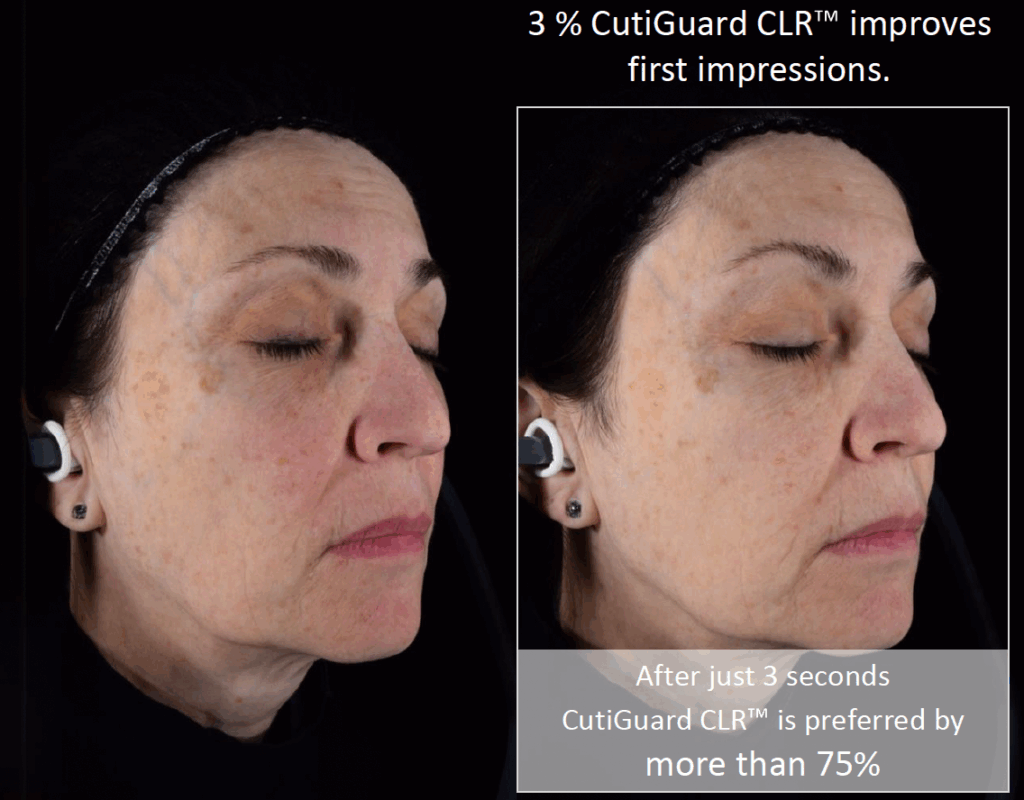
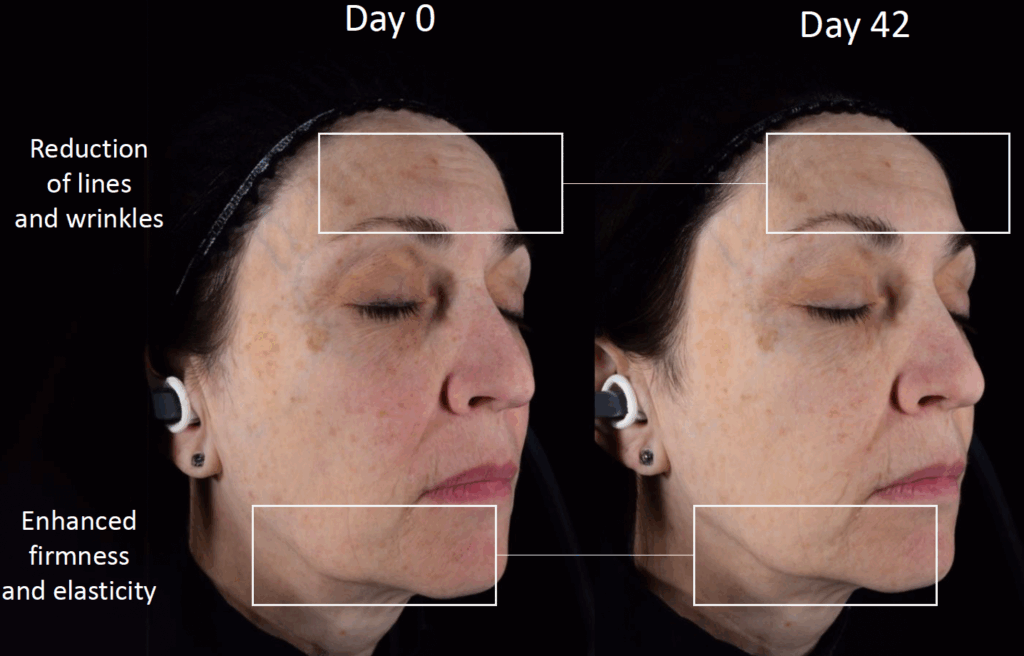
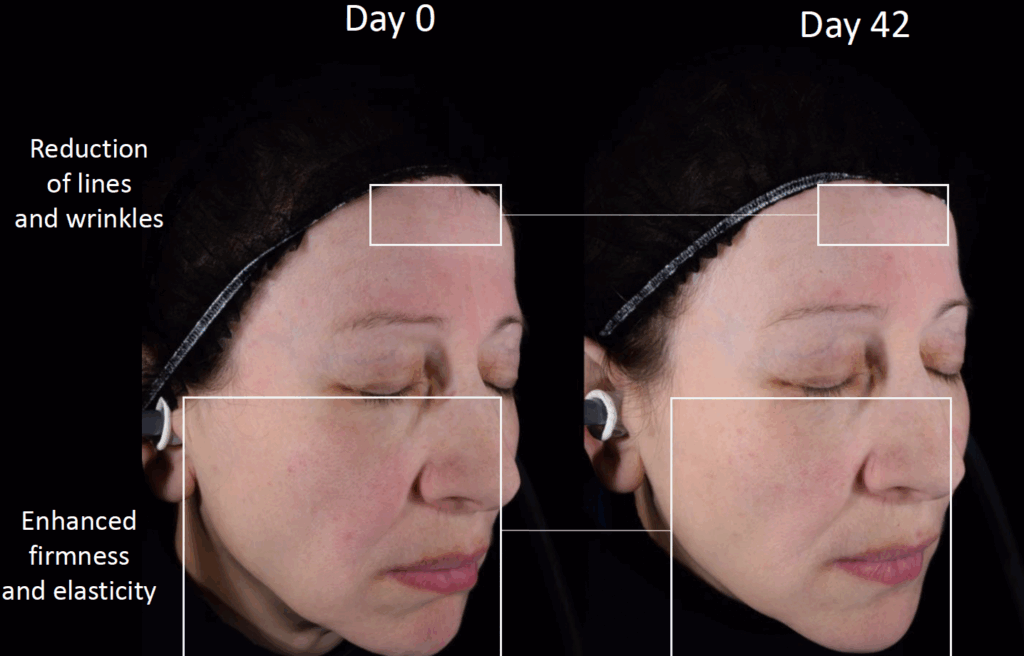

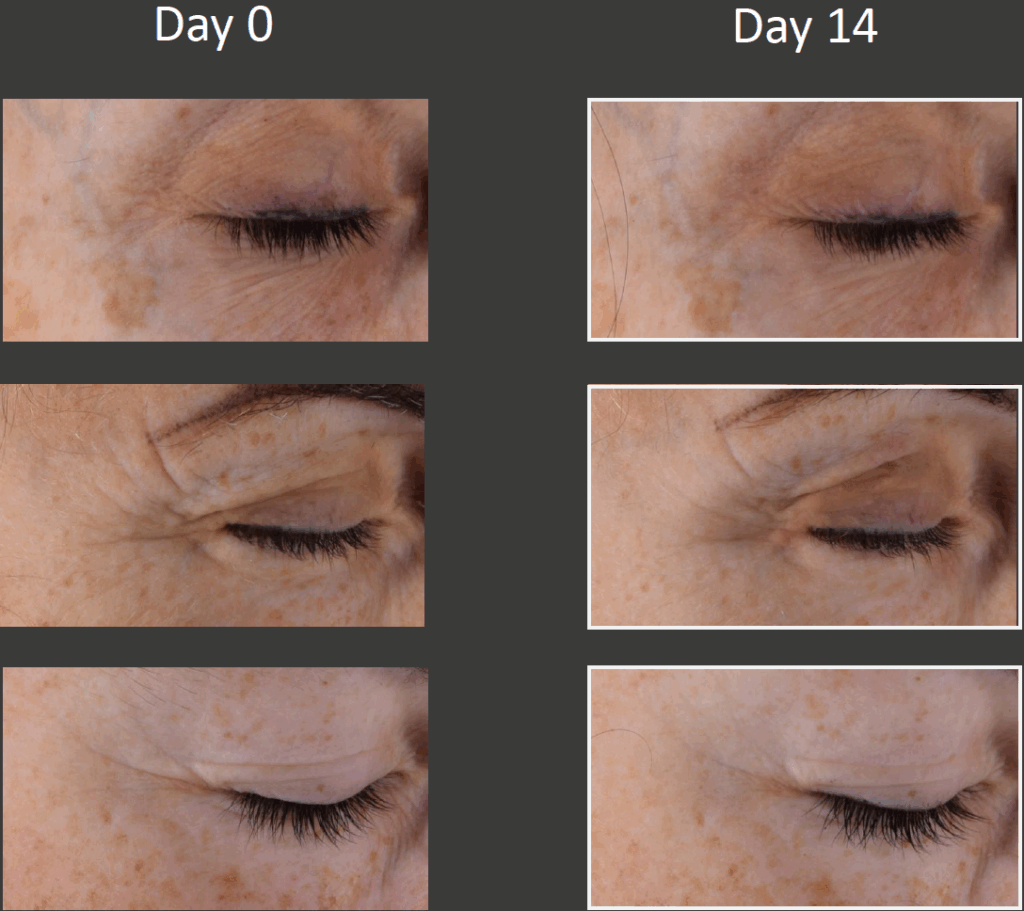
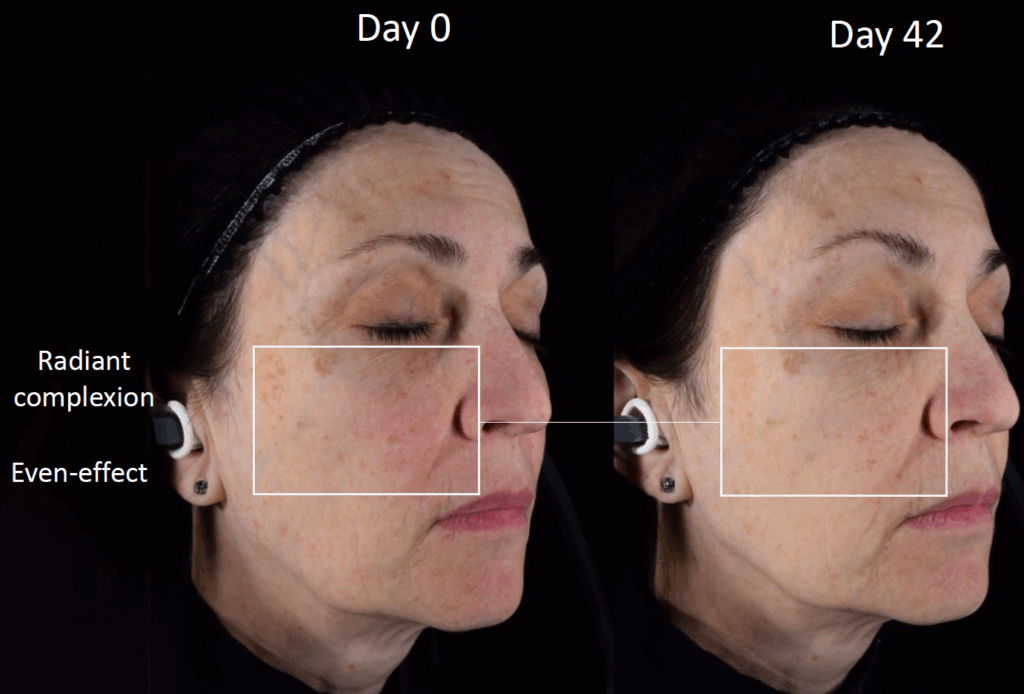
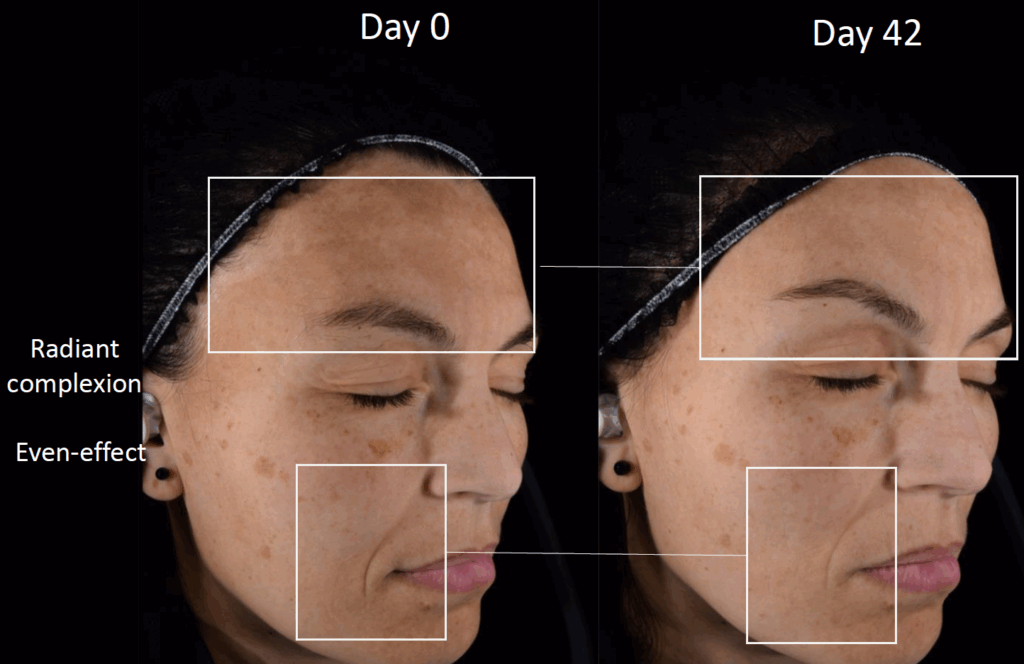
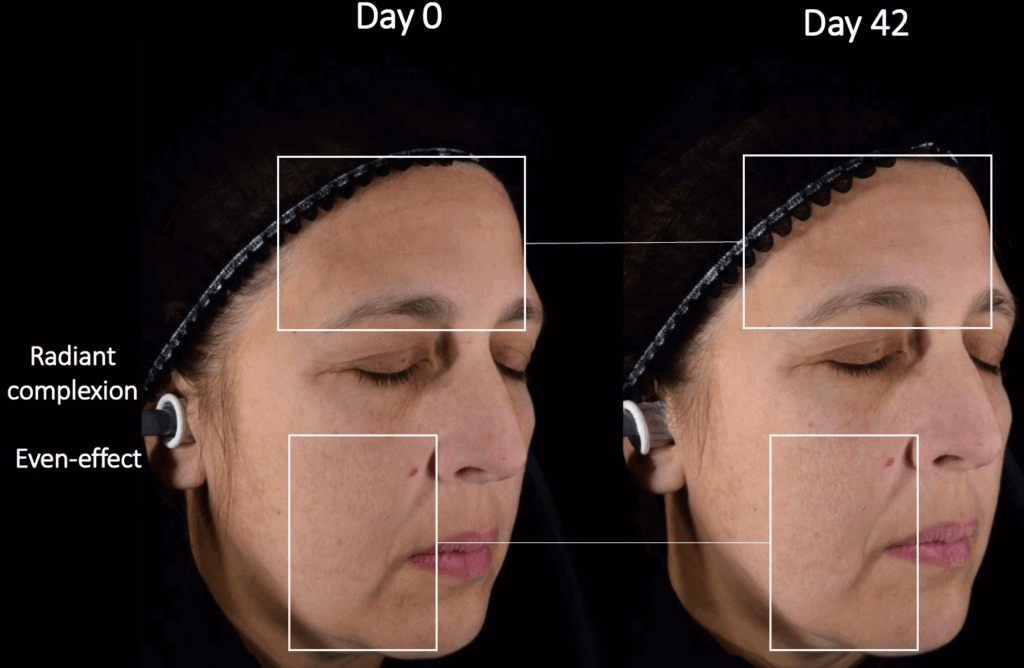
Why three seconds is enough. The psychophysics is well established: observers form face judgments in ≤100 ms; cosmetics can shift attractiveness at brief exposure, and age cues like facial contrast and tone evenness are decoded almost automatically. Designing a three-second paired-image test therefore mirrors how consumers actually decide. For formulators, that means a legitimate, perception-anchored KPI: “percent preference at 3 seconds,” paired with standardized optics (lighting, polarization, framing).
Skinimalism With Substance
Formulators are being asked to de-clutter routines without compromising outcomes. A single active that moves multiple glance-level cues—tone evenness, topography, and the integrated gestalt consumers call “radiance”—reduces the need to stack pigments and specialty blur agents merely to earn an instant-gratification claim. That’s how you cut SKUs without cutting satisfaction. When the mechanism works at the cellular level and the optics show up within a glance, your claims are tighter, the INCI is leaner, and the user experience is simpler.
Just as important, this approach is future-proof. The industry is moving toward claims that are perception-valid and method-transparent—claims built on short-exposure psychophysics tied to standardized imaging and optics. The three-second paradigm lets you lead with evidence consumers intuitively understand: “people preferred the treated skin at a glance.” With CutiGuard CLR™, that exact language is now supportable in public trade coverage and on the supplier’s site—clear enough for marketing, rigorous enough for R&D.
From Evidence to Advantage—in Three Seconds
“First-impression efficacy” is a rigorous way to talk about what customers actually notice. The literature tells you what they notice—more even tone, higher feature contrast, smoother micro-topography—and the methods show you how to measure it in seconds. CutiGuard CLR™ connects those dots with a biologically coherent mechanism and clinical-to-perception evidence, including a three-second preference outcome that maps directly onto real-world decision making. For skinimalist design, that’s the competitive edge: one active, multiple visible wins, fast.
Build Your Three-Second Win
Ready to build a lean, multi-benefit product with perception-anchored claims? Request the full technical dossier, in-vivo data package, and formulation guidance for CutiGuard CLR™ from Deveraux Specialties, or contact your dedicated sales manager for support throughout development.
References
- Zebrowitz L. A. (2017). First Impressions From Faces. Current directions in psychological science, 26(3), 237–242. https://doi.org/10.1177/0963721416683996
- Willis, J., & Todorov, A. (2006). First impressions: making up your mind after a 100-ms exposure to a face. Psychological science, 17(7), 592–598. https://doi.org/10.1111/j.1467-9280.2006.01750.x
- Stephen, I. D., Law Smith, M. J., Stirrat, M. R., & Perrett, D. I. (2009). Facial Skin Coloration Affects Perceived Health of Human Faces. International journal of primatology, 30(6), 845–857. https://doi.org/10.1007/s10764-009-9380-z
- Porcheron, A., Mauger, E., Soppelsa, F., Liu, Y., Ge, L., Pascalis, O., Russell, R., & Morizot, F. (2017). Facial Contrast Is a Cross-Cultural Cue for Perceiving Age. Frontiers in psychology, 8, 1208. https://doi.org/10.3389/fpsyg.2017.01208
- Nurani, A. M., Kikuchi, K., Iino, M., Shirasugi, Y., Sonoki, A., Fujimura, T., Hasegawa, K., & Shibata, T. (2023). Development of a method for evaluating skin dullness: A mathematical model explaining dullness by the color, optical properties, and microtopography of the skin. Skin research and technology : official journal of International Society for Bioengineering and the Skin (ISBS) [and] International Society for Digital Imaging of Skin (ISDIS) [and] International Society for Skin Imaging (ISSI), 29(7), e13407. https://doi.org/10.1111/srt.13407


